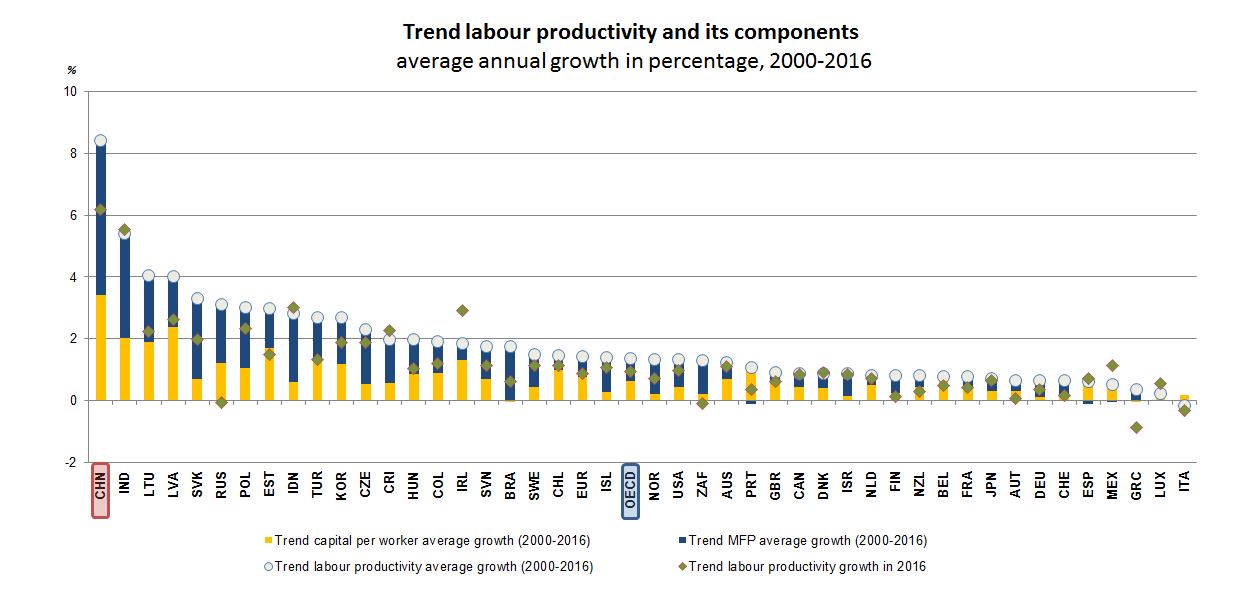China
 OECD recommendations
OECD recommendations
Raising productivity in China is key to increasing living standards and to making growth more inclusive. To foster innovation and entrepreneurship, the exit mechanism for unviable firms should be streamlined. Reallocation of labour from agriculture to industry and services has been a major driver of inclusive productivity growth and is likely to continue in the future.
- Improve the matching between the skills acquired through the tertiary education system and those sought by the labour market.
- Ensure equal access to education for all, regardless of household registration status.
- Phase out implicit government guarantees enjoyed by state-owned enterprises.
- Reduce state involvement in business operations by eliminating price controls and reducing barriers to entry of new competitors.
- Further enhance the rule of law, including by increasing transparency to reduce bribery.
 Data
Data
Source: OECD May 2017 Economic Outlook database
 Key publications
Key publications
"Recent trends in productivity in China: shift-share analysis of labour productivity growth and the evolution of the productivity gap,"OECD Economics Department Working Papers, No 1221, 2015.
Harry Wu, On China's strategic move for a new stage of development – A productivity perspective, presented and distributed at OECD Seminar, Paris, 23 September, 2014.
 Productivity - enhancing institutions
Productivity - enhancing institutions
China Productivity Promotion Center Association
National Development and Reform Commission
Related Documents


